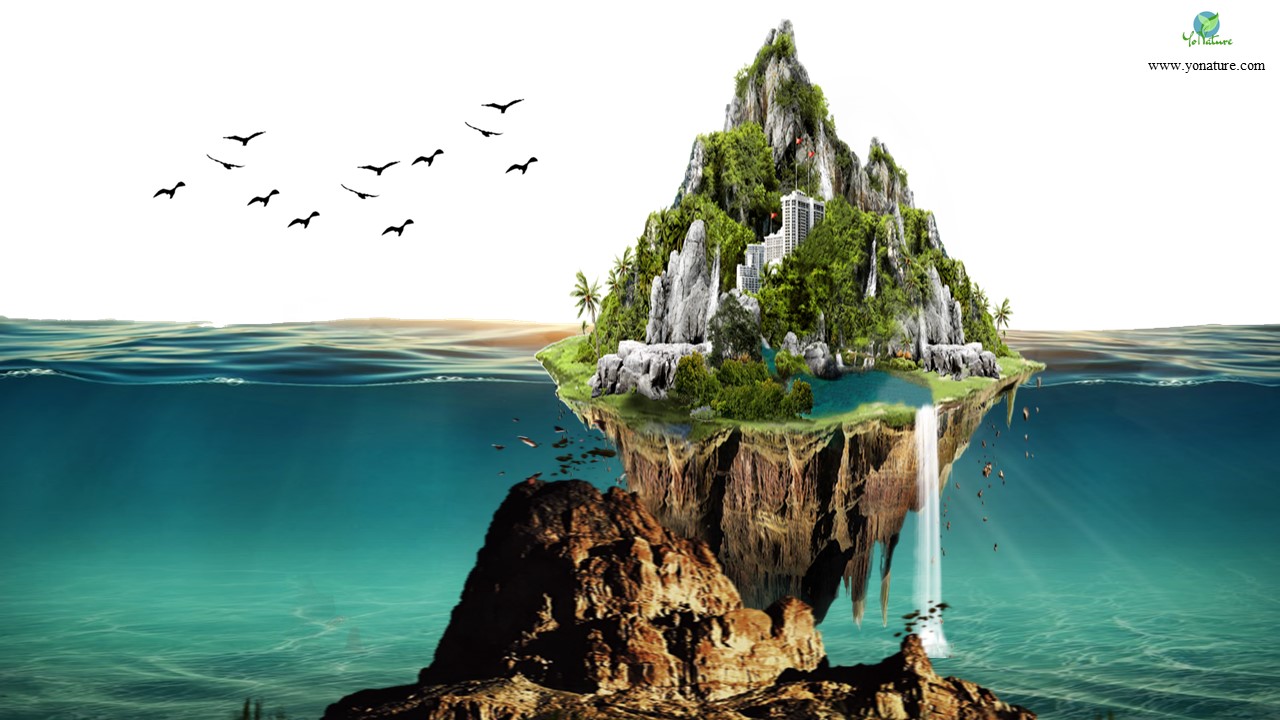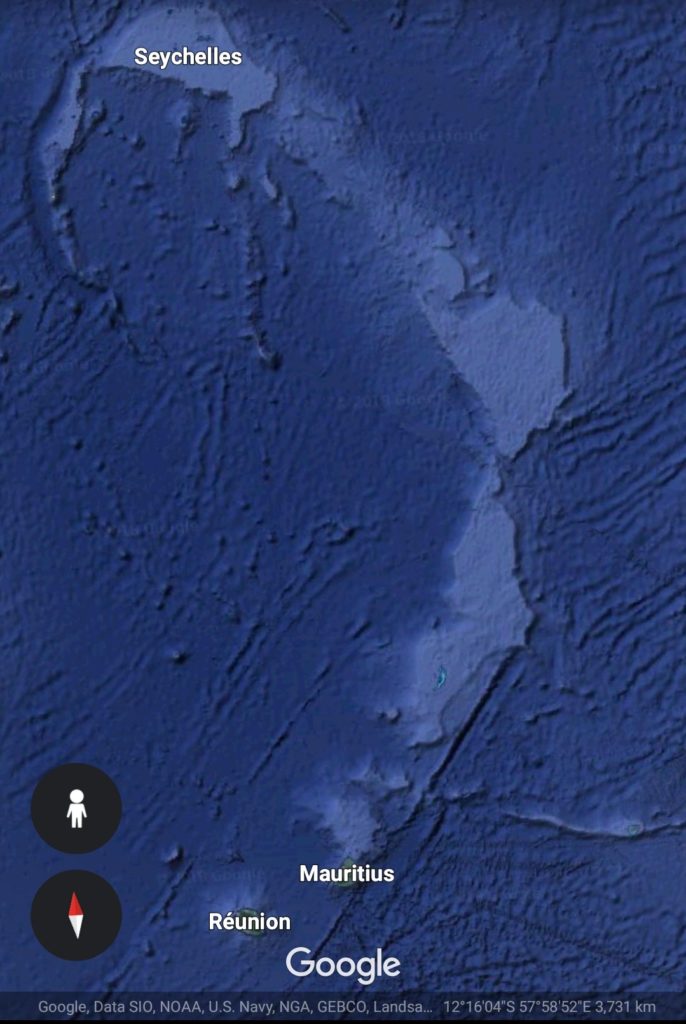Mauritius, the island on an underwater continent

In 2017, a team of scientists led by Ashwal published a paper in Nature Communications suggesting the presence of an ancient continent beneath Mauritius [1]. In fact, his discovery led to the conclusion that a part of the ancient continent, Gondwana (more accurately, a chunk of land lying between Madagascar and India) is right under Mauritius. Named, Mauritia, the continental mass has attracted a lot of interest and scepticism.
The discovery
What’s so surprising?
Archean zircons (2.5 billion years old) have been discovered as xenocrysts in rock outcrops of Mauritius.
- Normally zircons are found in granitic rocks, such as those of continental land. Mauritius, on the other hand, being of volcanic origin, is made up entirely of basalt.
- Mauritius is 9 million years old; the zircons are far older than the island itself.
- The xenocrysts do not come from any magmatic material of the island.
Ashwal and his team visited Mauritius for the first time in 1999 as stopover for a research project. They found out that there were zircons in sand samples, but at that time, it was thought to be due to contamination from previously used materials [2].
In 2015, zircons millions of years older than Mauritius were found again in sand samples of two beaches. This brought about the suggestion of a continental segment lying under the island. The idea was quickly brought down by critics: the zircons could have made their way to the island through waters, on animals, ships or any other aided way.
Xenocrysts in rock outcrops
The recent study, however, stamps the presence of Mauritia right under Mauritius by the discovery of xenocrysts in rock outcrops. This time there is no room for argument (other than chance) since the billion years’ old zircons have been found inside of rocks.
The scientists explain this discovery:
Zircons are very strong minerals that can withstand high pressures and temperatures. The minerals were locked inside of continental crust billions of years ago. It is estimated that around 100 Ma to 90 Ma, when India was moving northwards relative to Madagascar, a tension zone must have been created in between these two landmasses. In the late Cretaceous period, opposing forces being exerted on the middle grounds (called Mauritia) must have caused the microcontinent to tear and skid into the ocean [5]. The zircons date to the same time epoch during which Africa and Seychelles-India were diverging.
Continued volcanic activity in the Reunion hotspot, as well as magmatic expulsions from fracture zones in the submerged landmass, led to the formation of the initial volcanic shield that gave birth to Mauritius.
The Mascarene plateau in all this?
The presence of rising grounds under Mauritius is no secret.
The Mascarene plateau is an arc-like elevation for some 2000 km on the Indian Ocean floor. It is characterised by a broad base as well as deep trenches reaching the -2000 m. It extends from Seychelles in the north, underlying the Saya de Malha bank, Nazareth Bank, Cargados Carajos bank, Agalega, Tromelin up to Mauritius on the south tip [6].

The Mascarene plateau started to form approximately 40-50 million years ago [7]. The plateau probably emerged near the Chagos-Laccadive Ridge and eventually shifted to the south, south-west. Magmatic activities along a fault line on the plateau continued for a long time widening the plateau towards the south of the Chagos Rift. There are gaps along the plateau created by ridges like the Rodrigues Ridge that meets up with the plateau in the north of Mauritius [6].
The upper part of the plateau is made up of granitic landmass presumed to come from the splitting of India and Seychelles from Africa. The lower part, on the other hand, is thought to be made up of basalt from volcanic eruption over the Reunion hotspot [3,4]. The Mascarene plateau seems much younger compared to the oceanic crust under Reunion and Seychelles [8].
Facts, scepticism or nonsense?
This scientific research carried out by Ashwal helps to understand the types of materials found beneath the island of Mauritius. In the past, it was generally assumed that the lower part of the Mascarene plateau is of basaltic origin due to intense volcanic activity in the vicinity. However, now, archean zircons blowing up from lava-plumes prove that continental land must be under the basaltic regions.
The highlight of the study though is the age of the zircons [1]. The oldest Archean zircon discovered before this research project was approximately 3,000 Ma in the young lavas of the Galapagos. The zircons discovered in Mauritius are by far the oldest, around 2.3 Ga – 3 Ga in age [1]. This information helps to better understand continental drift in the Indian Ocean.
References:
- Ashwal, L. D. et al. (2017). Archaean zircons in Miocene oceanic hotspot rocks establish ancient continental crust beneath Mauritius. Commun.Vol 8, 14086 doi: 10.1038/ncomms14086. Available at https://www.nature.com/articles/ncomms14086 [Accessed 15.03.2018]
- Ther, K. (2013). Ancient lost continent discovered in Indian Ocean. National Geographic. [online] Available at https://news.nationalgeographic.com/news/2013/02/130225-microcontinent-earth-mauritius-geology-science/ [Accessed 15.03.2018]
- Duncan, R. A., Backman, J., Peterson, L. C, et al. (1990). 40Ar/39Ar Geochronology of basement rocks from the Mascarene plateau, the Chagos bank, and the Maldives ridge. Proceedings of the Ocean Drilling Program, Scientific Results, Vol 115. Available at http://www-odp.tamu.edu/publications/115_SR/VOLUME/CHAPTERS/sr115_04.pdf [Accessed 14.03.2018]
- Fisher, R.L., Johnson, G.L., and Heezen, B.C. (1967). Mascarene Plateau, Western Indian Ocean. GSA Bulletin, [online] Vol 78(10):12247-1266. Available at https://pubs.geoscienceworld.org/gsa/gsabulletin/article-abstract/78/10/1247/6142/mascarene-plateau-western-indian-ocean?redirectedFrom=fulltext[Accessed 15.03.2018]
- Torsvik, T.H., et al. (2013). A precambrian microcontinent in the Indian Ocean. Nature Geoscience, [online] Vol 6, p 223–227. Available at https://www.nature.com/articles/ngeo1736 [Accessed 16.03.2018]
- Saddul, P. (2002). Mauritius, A Geomorphological Analysis. Moka, Mauritius: MGI, pp 9-10
- Mc Dougall, I. and Chamalaun, F.G. (1969). Isotopic dating and geomagnetic polarity studies on volcanic rocks from Mauritius, Indian Ocean. Geol. Soc. Am. Bull. Vol 80, pp 1418-1442
- Heezen, B.C. (1965). Physiographic diagram of the Indian Ocean, the Red Sea, The Sulu Sea and the Celebes Sea. New York: Geol. Society of America.

Pingback: 5 reasons why ecotourism is better than traditional tourism - Yo Nature
Pingback: Volcanic Islands’ Rocks – Mauritius - Yo Nature
Pingback: Underwater waterfall of Mauritius - Yo Nature
Pingback: The purpose of ecotourism - Yo Nature
Pingback: Formation of a volcanic island: Mauritius - Yo Nature